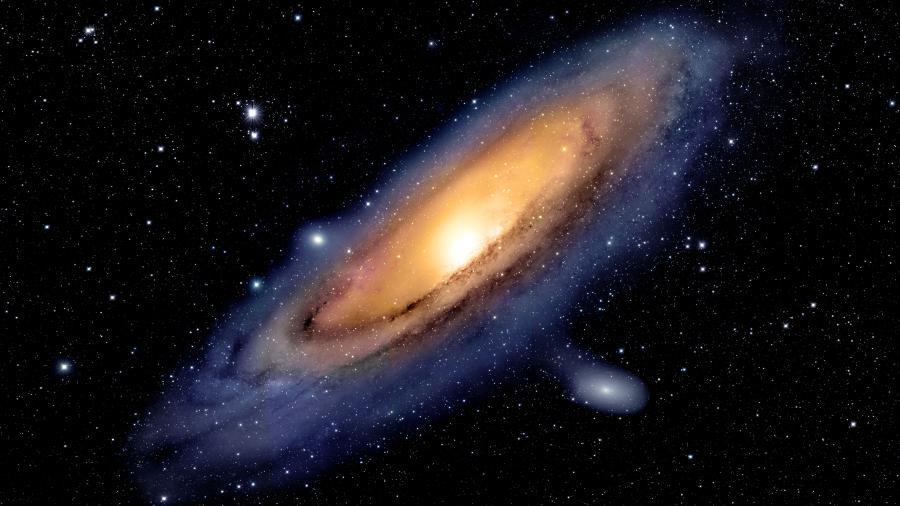Westmont Magazine A Stellar Career in Physics

Michael Sommermann studied theoretical nuclear physics in graduate school, earning a master’s degree and doctorate at the State University of New York at Albany. He completed post-doctoral work at the Max Planck Institute in Germany and at the University of Illinois Urbana-Champaign before joining the Westmont physics faculty in 1985. At first, he traveled weekly to Pasadena to conduct research with colleagues at Caltech. Then he began to broaden his interests to include astronomy and computational physics, establishing strong programs in both areas. He retires this spring after 38 years at Westmont.
Along with other professors hired in the 1980s and 1990s, Michael helped the college develop outstanding science departments. He obtained three research grants from the National Science Foundation (NSF) focused on the dynamics of skyrmion interactions and collisions.
When the late George Bate retired from the physics department, Michael took on the astronomy class. He received another NSF grant for an astronomy workshop at the University of Colorado in 1993 and received a Westmont Faculty Research Award that year.
“Astronomy is a fantastic class for the liberal arts,” Michael says. He began working with Westmont’s old telescope, which George Carroll, an engineer at Lockheed and an amateur astronomer, built for the college in 1957. “I thought it would be great to get a new state-of-the-art telescope, and we asked Colorado-based DFM Engineering to build one for us. The physics faculty worked together on a grant, and the and the W. M. Keck Foundation awarded the college $300,000 for the new telescope. The James L. Stamps Foundation and other donors also contributed.” Westmont installed the 24-inch reflector Keck Telescope, an F/8 Cassegrain instrument with Ritchey-Chretien optics, in 2007 and moved it to the new observatory in 2009.
“Once the telescope arrived, I was eager to work with it,” Michael says. “I tracked asteroids, imaged supernovae and variable stars, and measured the light-curves of exoplanets, as the telescope has the capability to detect these objects. Capturing the Andromeda Galaxy was a particularly rewarding experience.” He also conducted observational astronomy research with students during the summer.
For many years, Michael taught astronomy and an occasional course about the connection between astronomy and Christian faith. Now astrophysicist Jennifer Ito, who began as assistant professor of physics at Westmont last fall, teaches these classes. Michael also led the monthly viewings at the observatory until Professor Emeritus Ken Kihlstrom and instructor Thomas Whittemore took on this duty.
Then the physics department considered how to strengthen its program. “As an outgrowth of our program’s external review, excellent physicists recommended that we add computational physics, so we did,” Michael says. “Working with powerful computers has become essential in many areas of physics. Because of my background in theoretical physics, I was charged with developing a course on this important subject.”
Years earlier, in 1985, Michael secured the college’s first connection to the internet, then part of the Defense Advanced Research Projects Agency (DARPA). “I made a deal with Westmont,” he says. “They gave me money to move, and I asked to use it to buy this new gadget called a personal computer — it turned out to be the first PC on campus. To collaborate with colleagues at Caltech, a dedicated copper line was installed from my office, which ran down Cold Spring Road to UC Santa Barbara to connect to DARPA’s network. It was ridiculously slow.”
Until Westmont launched its new engineering program, Michael and other physics professors taught students majoring in engineering physics. “Now fewer and fewer students see a need to transfer and complete their training elsewhere,” he says. “They say they’d much rather finish at Westmont and go to graduate school. We prepare students to step out into the professional world with good job prospects.”
Michael has enjoyed developing his classes and working with students. He says that teaching computational physics has been particularly rewarding. “At the end of one of these classes, a student came up to me and said, ‘Now I know what I really want to do.’ To see a student get so excited about a subject and find a career is gratifying.”
In retirement Michael says he’ll stay in Santa Barbara, a location his three children and five grandchildren enjoy visiting. He plans to dabble in the orchard and garden behind his home. Since he grew up in Germany, he’ll also spend more time there reconnecting with family and friends. And he hopes to contribute something at Westmont by teaching an occasional course, perhaps in computational physics, and working at the observatory.
“Westmont has been a wonderful place for me and my family,” he says. “My wife, Emily, has been an adjunct music professor teaching violin. I’m grateful and thankful to God for our time here.”

